
by Pigeon Patrol | Oct 26, 2020 | Bird Deterrent Products, Bird Netting, Pigeon Control, Pigeon Patrol's Services
Guide To Type Of Birds: Maybe it’s due to the fact that birds were a central component of my household for many years (parakeets), but birds are often on my mind. Everyone romanticizes birds because of their ability to fly. Yes, flight is awesome, that’s why we invented the airplane. Bats and bugs fly, but rarely are those animals included on anyone’s list of “animals I’d like to be.” Oh, I wish I were a bird, then I could fly anywhere and be with other birds to peck at millet or something. I’m really happy I’m not a bird. If you were a bird then flying would be normal, and you wouldn’t understand that you were flying because you’d be a stupid bird. The only thing you would think about is probably some form of seed or worm, and its proximity to your beak. The rest of your time would be spent squawking, tweeting, or cawing for extended periods of time about nothing in particular.
Crows are apparently some of the “smartest” birds, which is like being the “most athletic” cripple.This is not meant as an assault on birds; anything but. I’m just laying out the facts as I see them. I love birds. Birds are hilarious. One of my fondest memories of visiting Spain was when I hit this pigeon with a rolled-up newspaper in a courtyard. It was awesome for some reason. Hitting any other animal with a rolled-up newspaper would be much less funny (including a human), but birds have that bit of comedic magic that puts their reactions above and beyond. If you haven’t laughed at a bird before, maybe you should look a little closer. If you still don’t think birds are Earth’s comedic gift to us (along with many other things; Jewish comedy writers mostly), then you should reexamine your sense of humor.
Let’s face it, birds are really stupid. Chickens, turkeys, and ducks are especially stupid for allowing themselves to be bred and murdered by the millions every day, but let us not excuse the less-notably stupid, but still fascinatingly dumb members of the bird kingdom. I think I could break down all groups of birds into a few distinct categories, and this will be the new biologist’s guide to understanding and analyzing birds and their behavior, and general stupidity and ridiculousness.
Group #1: Birds we eat a lot of.
Examples: Chickens, ducks, turkeys, maybe some geese if you’re in 19th century Britain.

These birds are really stupid and extremely funny. One time we put a live chicken in my friend’s room while he was out, and he came back in and freaked out. Just the mere presence of a chicken demands a mirthful response. Look at the greatest comedy props of all time: the whoopie cushion and the rubber chicken. They both appeal to the most primal of human comedic needs. The whoopie cushion is great because it makes a farting sound, and the rubber chicken is great because it looks like a chicken and that’s just funny. Eating chicken is awesome too, and they also lay eggs which I eat a ton of. These two points are not funny, but should be noted to access the chicken’s overall value to human society.
All ducks look partly confused but generally in the moment and satisfied. Ducks seem to need human names like Roger, Stanley, and Ralph. The “quack” is also a very underrated bird noise. In my opinion it sits just above a goose “honk,” and right below a crow’s “caw” on the bird noise hierarchy. Famous ducks include Donald, Daffy, and the Aflac duck.
Turkeys are funny because they are so awkward. I know turkeys in factory farms are pretty messed up, so to appreciate good turkey humor you have to see wild turkeys. They’re kind of scary but at the same time, whatever, they’re stupid turkeys. In English, the word “turkey” is used to describe someone of questionable intelligence and above-average awkwardness. Benjamin Franklin wanted to make this our national bird instead of the bald eagle—one of the many reasons I don’t really like Benjamin Franklin.
Group #2: Birds that hang out near people and annoy them.
Examples: Pigeons, crows, seagulls.
These are perhaps the funniest birds because they’re so annoying and stupid. What’s better than watching a seagull or pigeon swoop in out of nowhere and steal French fries from beachgoers and random middle-aged people? Pigeons are everywhere around the world and they bob their heads when they walk. This is pretty funny. How did pigeons get to so many different places? I think maybe world leaders back in the day got together and had a summit about bringing more generic comedy into cities worldwide. Unanimously they agreed that these stupid birds could bring cultures together better than anything else.
Crows are apparently some of the “smartest” birds, which is like being the “most athletic” cripple. I’d rather be a stupid human than a “smart” bird. Have you ever heard one of those obnoxious crows that just keeps on cawing, and eventually it becomes some bastardized version of the original caw? It starts as your formal CAW CAW before descending into RAW WAW AWWWWWWW. I still remember waking up to the stupidest cawing I’ve ever heard back in eighth grade. Crows are really funny.
Seagulls always steal stuff from people, but it’s fun to throw bottles at them. I love when people get angry at you for hitting a seagull with something when you’re at the beach. People defend seagulls so much until they’re actually robbed by one of these ridiculous creatures. Now there’s a cause to really get behind, save the seagulls.
Group #3: Birds that kill rodents on nature shows.
Examples: Eagles, hawks, owls.

In my opinion, this is the only group of birds that I can consider “badass.” I know there are obvious outliers like certain carnivorous birds in Australia or something, but I really don’t care. I love seeing these birds kill stuff on nature shows, and if I had to make any bird really big so I could saddle it and ride it, it would probably be an eagle. Eagles are the symbol of America, and that’s pretty cool.
Hawks like to fly in circles over random places so people will stop and say, “Oh, look at that hawk! I wonder what he’s flying over?” He’s flying over a bunch of people who care about seeing a hawk fly in circles. Congratulations on feeding a hawk’s ego.
Owls are really wise for birds. I know this because they somehow convinced all fourth graders that it was reasonable to dissect their puke for science class.
Group #4: Big, dumb flightless birds.
Examples: Ostriches, emus, penguins, kiwis, peacocks.

These birds taste better than those in Group 1, but people don’t give them enough credit for that. I’ve never tasted penguin, but I suppose it may be a bit fishy. Either way, ostrich is delicious. These birds could probably mess some stuff up if you left them alone in your apartment. They would probably walk around scratching and pecking at stuff with their awkward bodies until everything broke. I think that’s inconsiderate, but big, dumb, flightless birds don’t know any better.
This group is synonymous with stupidity. Dodo’s were big, dumb flightless birds that eventually became too stupid to live on the island of Mauritius and subsequently rendered themselves extinct. I’ve met a bunch of emus, and each one was really unintelligent. They can barely hold a conversation, let alone begin to write an essay or solve a math problem. Purely idiotic creatures.
Penguins get a lot of credit for mating and living where it’s cold. They’re also acknowledged for sort of looking like they are wearing tuxedos. I would like to see a penguin actually wearing a tuxedo tailored to its proportions. It would have such a difficult time doing anything penguiny, and that would be comedy gold.
Group #5: Pet birds that may be able to talk.
Examples: Cockatiels, parrots, parakeets.

I’ve had a lot of experience with these types of birds. I lived with a number of parakeets for many years. They like to squawk and annoy people who aren’t used to them. They can also smell fear like dogs, and will pester those that find them most repellent.
Parrots have tricked a lot of people into thinking they’re smart because they can speak some English. I don’t buy into the parrot hype. They kind of creep me out. If I wanted to hear words over and over again, I would just say those words over and over. Or, in the true nature of parrots, I would just record my voice and whenever I needed a little dose of language, I would just play the recording. Everyone I know speaks better human language than parrots (this may be because I don’t personally know any infants right now), so maybe stop giving them so much credit and they won’t cost $1,500 at Petco.
Group #6: Birds that people like to see and know the names of, but are generally useless otherwise.
 Examples: Cardinals, robins, goldfinches.
Examples: Cardinals, robins, goldfinches.
These birds are cool because they can make anyone sound like a birdologist at any given moment. “Ooh, look at that cardinal! You know it’s a male because it’s bright red; the females are less brightly colored.” This is a great way to sound smart by regurgitating well-known knowledge as if it were the result of years of consistent bird-study. Robins are good because it’s my mother’s name, as well as the name of Batman’s gayboy sidekick. They also mean spring is here, or something.

Group #7: All the little black birds that hang out on power lines and no one really cares about.
Examples: Those little black birds that hang out on power lines that I don’t know the names of.
Sometimes a bunch of these things will fly all at once off of a power line. It makes you feel like you’re in a movie where something really epic and scary is about to happen. No large group of birds is better at being ominous and setting the stage for something badass. Other than that, these birds are pretty useless.
Group #8: The peregrine falcon.
Yeah, it gets its own category for some reason.

This bird is “the fastest animal in the world,” though here’s another bird fallacy I don’t buy into. Barring humans (the actual fastest animal in the world; we have planes and rocket ships, those are way faster than falcons), I still give the “fastest” card to the cheetah. Peregrine falcons are just sort of plummeting when people test their speed. It’s not like this thing is flapping its way to the record, it’s just falling and flapping simultaneously. Just because it can control itself while falling doesn’t mean it deserves the title. Still, this bird is badass for killing doves in midair and having a really intense and dramatic stare.
So there you have it: the 8 distinct type of birds, meticulously categorized and analyzed for the scientific community. I hope you feel a newfound respect for these hilarious, not-at-all mysterious, omnipresent creatures.
source
About Pigeon Patrol:
Pigeon Patrol Products & Services is the leading manufacturer and distributor of bird deterrent (control) products in Canada. Pigeon Patrol products have solved pest bird problems in industrial, commercial, and residential settings since 2000, by using safe and humane bird deterrents with only bird and animal friendly solutions. At Pigeon Patrol, we manufacture and offer a variety of bird deterrents, ranging from Ultra-flex Bird Spikes with UV protection, Bird Netting, 4-S Gel and the best Ultrasonic and audible sound devices on the market today.
Contact us at 1- 877– 4– NO-BIRD, (604) 585-9279 or visit our website at www.pigeonpatrol.ca
Bird Gone, Pigeon Gone, Seagull Gone, Pigeon problems, pigeon spikes, 1-877-4NO-BIRD, 4-S Gel, Bird Control, Pigeon Control, bird repellent, Bird Spikes, bird law sonic bird repellent, stainless steel bird spikes, bird spikes Vancouver, Ultra Sonic Bird Control, Bird Netting, Plastic Bird Spikes, Canada bird spike deterrents, Pigeon Pests, B Gone Pigeon, Pigeon Patrol, pest controller, pest control operator, Bird law pest control technician, Pigeon Control Products, humane pigeon spikes, pigeon deterrents, type of birds, pigeon traps, Pigeon repellents, Sound & Laser Deterrents, wildlife control, raccoon, skunk, squirrel deterrent, De-Fence Spikes, Dragons Den, Canada bird spikes, Pigeon behavior ,Canada pigeon, pigeon control, pigeon patrol, pigeon. Kill pigeons, crow, starling, Pigeon Habitat,
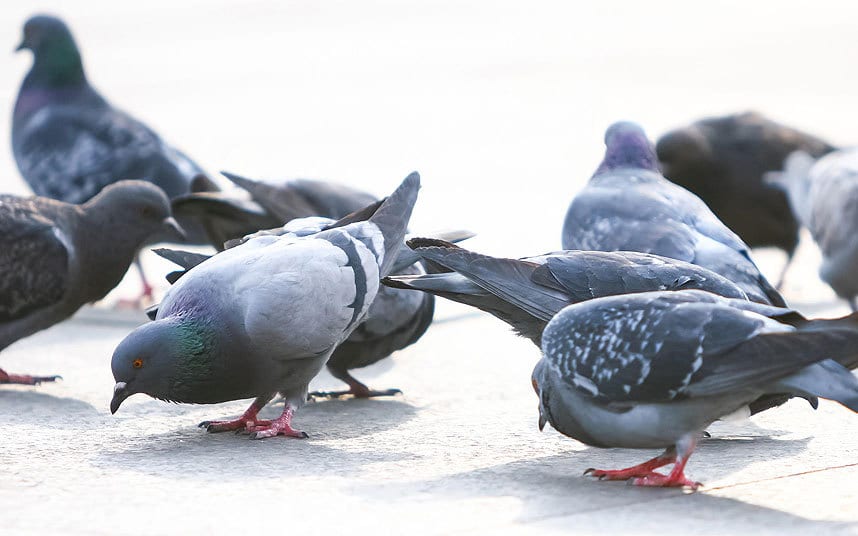
by Pigeon Patrol | Oct 21, 2020 | Animal Deterrent Products, Bird Deterrent Products, Bird Netting, Bird Spikes, Pigeon Patrol's Services, Pigeon Spikes
Pigeon Behavior
Most birds take a sip of water and throw back their heads to let the water trickle down their throats. But pigeons (and all of their relatives in the family Columbidae) suck up water, using their beaks like straws.
Pigeon Behavior: Do pigeons have compasses in their heads? Not really, but pigeons, especially those bred for their homing instincts, seem to be able to detect the Earth’s magnetic fields. Cornell University pigeon researcher Dr. Charles Walcott says that magnetic sensitivity, along with an ability to tell direction by the sun, seems to help pigeons find their ways home.
On the ground, pigeons don’t hop the way many birds do. They walk or run with their heads bobbing back and forth. Pigeons are strong fliers and can fly up to 40 or 50 miles per hour. Some pigeons are raised for their exceptional abilities to fly fast and find their ways home. These pigeons may fly as far as 600 miles in a day. Although feral pigeons are good fliers too, most of these birds seem to stay close to their regular feeding sites.
As gregarious animals, feral pigeons tend to nest in flocks. Once they settle, they tend to nest at the same place for the rest of their lives. Pigeons are extraordinarily intelligent. Even when removed from the nest, they will return back to it. The distance doesn’t play a role—pigeons have “built-in” compasses in their bodies which provide tremendous help with orientation. No matter how far away from their home they are released, they will still find their way back.
Feral pigeons breed rapidly. They lay two eggs, up to six times a year—depending on the food available. If a local population is decreased, pigeons from other areas flock to take advantage of the abundance of food. Thus, poison often causes population boom rather than decrease.

Natural Predators
Man is by far the greatest predator of pigeons. Yet they also have plenty of other predators too including Falcons, Sparrow, hawks, Owls, Foxes, Ferrets, Snakes, Rats, Cats, Dogs and more.
One species of falcon, Merlin, eats so many pigeons its scientific name is Falco columbaries (with the “Columba-” meaning pigeon) and it was formerly called pigeon hawk. Merlin’s are medium-sized falcons and although they are not very common in cities, you can bet they are preying on pigeons living in open parks near marshes and ponds.They are small and quick and they tend to prefer park areas rather than high towers. They hide in trees, or drop down from light posts. The one I saw took his pigeon back up to a tree and the only evidence was a few feathers drifting down occasionally. I only ever saw that once, but I know they are around. I bet you have them too. Another falcon that is a natural predator of the pigeon is the peregrine falcon, a bird that can achieve speeds of up to 200 miles per hour in a dive and one of the few birds that has the speed and the maneuverability to outpace and catch a pigeon in flight. In North America some big cities have wild Peregrine Falcons. These falcons like to nest on high cliffs, and city high rises work too. There is a famous pair in San Francisco, for example. Whenever these birds find a ledge to nest on, the Eagle-cam team is usually not far behind.

Source
About Pigeon Patrol:
Pigeon Patrol Products & Services is the leading manufacturer and distributor of bird deterrent (control) products in Canada. Pigeon Patrol products have solved pest bird problems in industrial, commercial, and residential settings since 2000, by using safe and humane bird deterrents with only bird and animal friendly solutions. At Pigeon Patrol, we manufacture and offer a variety of bird deterrents, ranging from Ultra-flex Bird Spikes with UV protection, Bird Netting, 4-S Gel and the best Ultrasonic and audible sound devices on the market today.
Contact us at 1- 877– 4– NO-BIRD, (604) 585-9279 or visit our website at www.pigeonpatrol.ca
Bird Gone, Pigeon Gone, Seagull Gone, Pigeon problems, pigeon spikes, 1-877-4NO-BIRD, 4-S Gel, Bird Control, Pigeon Control, bird repellent, Bird Spikes, bird law sonic bird repellent, stainless steel bird spikes, bird spikes Vancouver, Ultra Sonic Bird Control, Bird Netting, Plastic Bird Spikes, Canada bird spike deterrents, Pigeon Pests, B Gone Pigeon, Pigeon Patrol, pest controller, pest control operator, Bird law pest control technician, Pigeon Control Products, humane pigeon spikes, pigeon deterrents, pigeon traps, Pigeon repellents, Sound & Laser Deterrents, wildlife control, raccoon, skunk, squirrel deterrent, De-Fence Spikes, Dragons Den, Canada bird spikes, Pigeon behavior ,Canada pigeon, pigeon control, pigeon patrol, pigeon. Kill pigeons, crow, starling, Pigeon Habitat,

by Pigeon Patrol | Oct 20, 2020 | Pigeon Control, Pigeon Patrol's Services, Pigeons in the News
Facts About The Pigeon
If you live on earth, chances are you’ve seen a pigeon before, if not on the daily. But do you really know anything about the pigeon other than the fact that they leave their droppings everywhere? (Which could be really annoying. Check out our products here https://www.pigeonpatrol.ca/) Here are 5 cool facts about pigeons you may have not known!
1) AT ONE POINT, MORE THAN ONE-QUARTER OF ALL THE BIRDS LIVING IN THE U.S. MAY HAVE BEEN PASSENGER PIGEONS
The passenger pigeon or wild pigeon is an extinct species of pigeon that was endemic to North America. Its common name is derived from the French word passager, meaning “passing by”, due to the migratory habits of the species. The scientific name also refers to its migratory characteristics
Wild/feral rock pigeons reside in all 50 states, which makes it easy to forget that they’re invasive birds. Originally native to Eurasia and northern Africa, the species was (most likely) introduced to North America by French settlers in 1606. At the time, a different kind of columbiform—this one indigenous—was already thriving there: the passenger pigeon (Ectopistes migratorius). As many as 5 billion of them were living in America when England, Spain, and France first started colonizing, and they may have once represented anywhere from 25 to 40 percent of the total U.S. bird population. But by the early 20th century, they had become a rare sight, thanks to overhunting, habitat loss, and a possible genetic diversity issue. The last known passenger pigeon—a captive female named Marth who died on September 1, 1914.

SOURCE
2) THEY CAN FIND THEIR WAY BACK TO THE NEST FROM OVER 2000KM AWAY
Another cool fact about pigeons is they have extraordinary navigational abilities. Take a pigeon from its loft and let it go somewhere it has never been before and it will, after circling in the sky for while, head home. This remarkable capacity extends to places tens even hundreds of kilometers from its home and is all the more remarkable to humans because we are apparently incapable of it ourselves.
But we have long made use of the pigeon’s homing ability, principally for carrying messages in the past. And for several decades now the pigeon has played center stage in scientists’ attempts to understand the map and compass mechanisms fundamental to bird navigation.
We’ve now learn that pigeons repeatedly released from the same site soon learn a habitual route home which they stick to faithfully even if it is not the quickest. Different individuals learn, and stick to, different routes. Routes often follow linear landscape features, such as roads or field margins, but are learnt most effectively over landscapes of intermediate complexity. This means that urban landscapes may in fact be too complex for optimum route learning.
Pair birds with different ideas about how to get home from the same place and the result is an elegant exposé of each bird’s propensity to lead out or follow others. Birds that are more faithful to their own route when homing alone are more likely to emerge as leaders when homing socially.
So if the pigeon’s brain contains a network of learnt routes, how are these memories acquired and how do they interact? Recently, my colleagues Andrea Flack and Dora Biro showed that having to learn three routes in parallel doesn’t cause pigeons any additional confusion. Route-learning is memorized independently, regardless of whether the sites they are released from are encountered sequentially, randomly intermingled or in strict rotation.
Treating the art of pigeon homing as a natural learning laboratory is a new science into which we are just taking the first steps, and it seems that we have yet to find the boundaries of the bird’s abilities. Clearly, we still have much to learn from the pigeon.
On to the next pigeon facts
3) PIGEONS WERE USED AS MESSENGERS
Pigeons were effective as messengers due to their natural homing abilities. The pigeons were transported to a destination in cages, where they would be attached with messages, then the pigeon would naturally fly back to its home where the recipient could read the message.
The earliest large-scale communication network using pigeons as messengers was established in Syria and Persia around the 5th century BC. Much later, in the 12th century AD, the city of Baghdad and all the main towns and cities in Syria and Egypt were linked by messages carried by pigeons. This was the sole source of communication. In Roman times the pigeon was used to carry results of sporting events, such as the Olympic Games, and this is why white doves are released at the start of the Olympic Games today. In England, prior to the days of telegraphs, pigeons were often taken to football matches and released to carry home the result of the game. Their use as a messenger in wartime resulted in many pigeons being awarded honors by both the British and French Governments. Incredibly, the last ‘pigeon post’ service was abandoned in India in 2004 with the birds being retired to live out the rest of their days in peace.
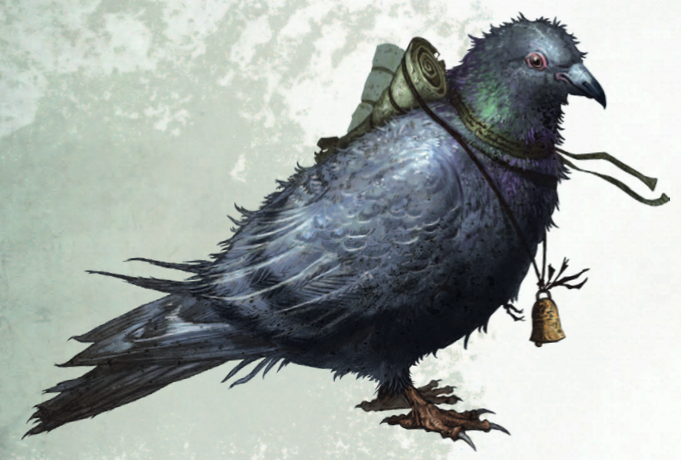
4) THEY SAVED THOUSANDS OF HUMAN LIVES DURING WORLD WARS I AND II.
Pigeons’ homing talents continued to shape history during the 20th century. In both World Wars, rival nations had huge flocks of pigeon messengers. (America alone had 200,000 at its disposal in WWII.) By delivering critical updates, the avians saved thousands of human lives. One racing bird named Cher Ami completed a mission that led to the rescue of 194 stranded U.S. soldiers on October 4, 1918.
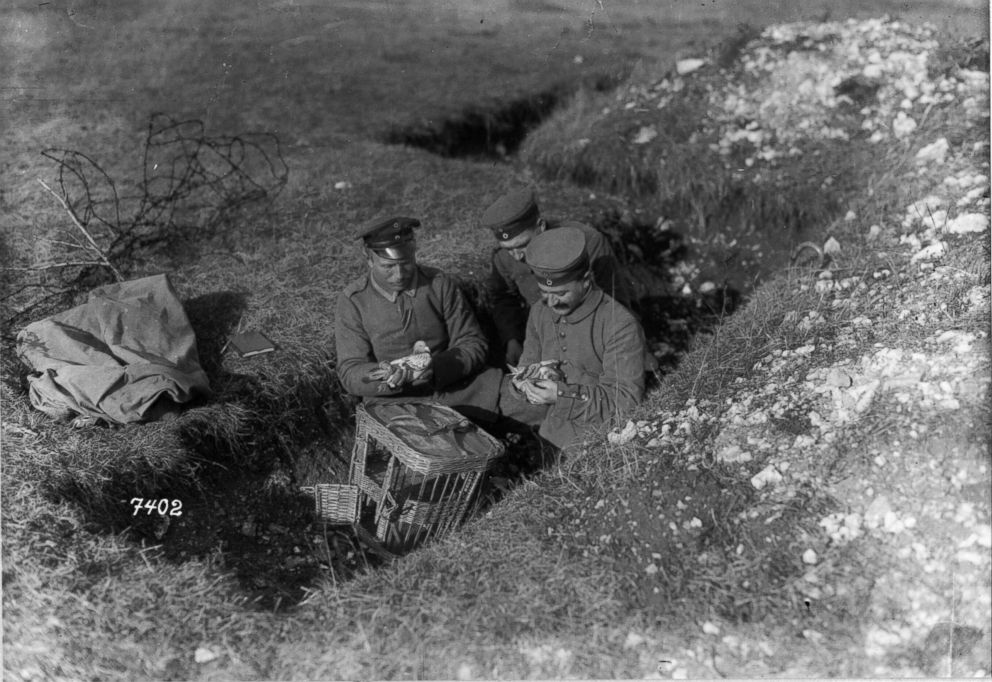
5) THEY MIGHT BE THE FIRST DOMESTICATED BIRD.
The common city pigeon (Columba livia), also known as the rock pigeon, might be the first bird humankind ever domesticated. You can see them in art dating back as far as 4500 BCE in modern Iraq, and they’ve been a valuable source of food for thousands of years. The rock pigeon is the world’s oldest domesticated bird. Mesopotamian cuneiform tablets mention the domestication of pigeons more than 5,000 years ago, as do Egyptian hieroglyphics. Research suggests that domestication of pigeons occurred as early as 10,000 years ago.
And there you have it! 5 Cool facts about pigeons! Which one was new to you?
About Pigeon Patrol:
Pigeon Patrol Products & Services is the leading manufacturer and distributor of bird deterrent (control) products in Canada. Pigeon Patrol products have solved pest bird problems in industrial, commercial, and residential settings since 2000, by using safe and humane bird deterrents with only bird and animal friendly solutions. At Pigeon Patrol, we manufacture and offer a variety of bird deterrents, ranging from Ultra-flex Bird Spikes with UV protection, Bird Netting, 4-S Gel and the best Ultrasonic and audible sound devices on the market today.
Contact us at 1- 877– 4– NO-BIRD, (604) 585-9279 or visit our website at www.pigeonpatrol.ca
Bird Gone, Pigeon Gone, Seagull Gone, Pigeon problems, pigeon spikes, 1-877-4NO-BIRD, 4-S Gel, Bird Control, Pigeon Control, bird repellent, Bird Spikes, sonic bird repellent, stainless steel bird spikes, bird spikes Vancouver, Ultra Sonic Bird Control, Bird Netting, pigeon facts Plastic Bird Spikes, Pigeon Fact, Canada bird spike deterrents, Pigeon Pests, B Gone Pigeon, Pigeon Patrol, pest controller, pest control operator, pest control technician, Pigeon Control Products, humane pigeon spikes, pigeon deterrents, pigeon traps, Pigeon repellents, Sound & Laser Deterrents, wildlife control, pigeon facts raccoon, skunk, squirrel deterrent, De-Fence Spikes, Dragons Den, Canada bird spikes, Canada pigeon, pigeon control, pidgon patrol, pigeon. Kill pigeons, crow, starling, Pigeon Habitat, Cool Facts About Pigeons, Pigeon Facts
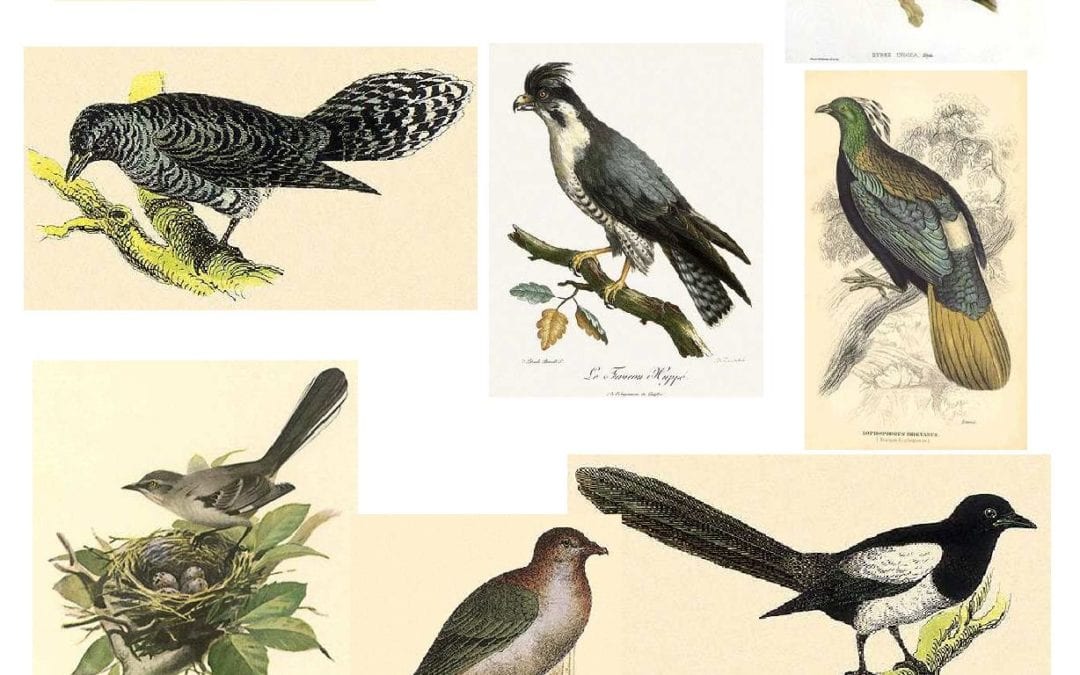
by Pigeon Patrol | Oct 20, 2020 | Bird Law, MBCA, Pigeon Control, Pigeon Patrol's Services
What Is The Bird Protection Law?
Most species of birds in Canada are protected by the bird law under the Migratory Birds Convention Act, 1994 (MBCA). The MBCA was passed in 1917, and updated in 1994 and 2005, to implement the Migratory Birds Convention, a treaty signed with the United States in 1916. As a result, the Canadian federal government has the authority to pass and enforce regulations [Migratory Birds Regulations (C.R.C., c. 1035)] to protect those species of birds that are included in the Convention. Similar legislation in the United States [Birds Protected By The Migratory Bird Treaty Act] protects birds species found in that country, though the list of bird species protected by each country can be different.
“Migratory birds” are defined by Article I of the Convention which names the families and subfamilies of birds protected, and provides some clarification of the species included. This list is provided as a policy interpretation of Article I. Bird species not listed here may, or may not, be protected under provincial or territorial legislation, the Convention on Biodiversity, or the Species at Risk Act (2002). Persons making any decisions regarding the protected status of a bird species in Canada should consult these other statutes. Environment and Climate Change Canada requires that all three criteria below be met to qualify a species for the list of bird species protected in Canada under the MBCA.
Protected Birds
Most Common Protected Birds
- Swallows.These birds generally have a short bill, long pointed wings, and a deeply forked tail. They arrive seasonally and build their mud nests under eaves and patio covers. Swallows fly to and from their nests thousands of times a day and employ “aerial foraging” to capture flying insects in their beaks.
- Woodpeckers. These sharp-billed birds tap trees and wood surfaces an average of 8,000-12,000 times per day, leaving deep, round holes 3 to 5cm in diameter. They generally have a very long tongue (up to four inches) with a glue-like substance on the tip for catching insects. They also have bristle-like feathers over their nostrils to keep wood particles from being inhaled.
- Canada Geese. These large birds feed on grasses, sedges, waste grain and berries. They can see more than 180 degrees horizontally and vertically, and they can travel more than 1,000 kilometers a day while migrating. Some geese live up to 24 years in the wild. The birds can cause major damage to turf grass due to foraging and fecal contamination. A single goose can defecate every 20 minutes and leave up to 1.5 pounds each day.
- Gulls.These large, clever birds can drink both fresh and salt water. They vary in size from the Little Gull (120 g and 29 cm) to the large Great Black-Beaked Gull (1.75 kg and 75 cm). They will eat seed, fruit and leftovers of human meals. The mounds of gull droppings can damage boats, streetlights and coastal rooftops. The bacteria, fungal agents and ectoparasites found in gull droppings can carry such diseases as histoplasmosis, encephalitis, salmonella and meningitis.
Unprotected Birds
Unprotected birds include the Pigeon, House Sparrows, & European Starling. They are not covered in the bird law
Pigeons are the largest of the 3 species, at about 12 inches long, and weigh 12 to 17 ounces. They typically are blue-gray with 2 black bands on the wings, and a black band on the tail that contrasts with its white rump (Figure 3). Color ranges from all white to mottled brown to sooty black. They are larger than the tawny-brown mourning doves that are native to the US and protected by federal and state regulations.
House Sparrows are the smallest of the unprotected birds at about 6½ inches long and weighing less than an ounce (Figure 1). Both genders are mostly brown with black streaks above and grayish below. Males have a black throat-bib flanked by white spots. Immature male house sparrows look like females. Do not confuse house sparrows with native sparrows (i.e., chipping sparrow, grasshopper sparrow, song sparrow) that are beneficial and protected by federal and state regulations.
European starlings are robin-sized, short-tailed black birds about 8½ inches long, and weigh about 3 ounces. Plumage color changes with gender and season (Figure 2). In summer, adults are glossy black with light speckles. In winter, birds have larger speckles, making them look browner from a distance. The dark pointy beak becomes bright yellow in spring. Both males and females have pinkish-red color on their legs. Other native “blackbirds” (e.g., red-winged blackbird and common grackle) and are protected by federal and state regulations
Species Range
All 3 species of unprotected birds are found throughout the northeast, especially where there are people and human-altered environments.
Health and Safety Concerns
These birds can carry and transmit diseases that are infectious to humans. Diseases of particular concern include aspergillosis, histoplasmosis, psittacosis, and salmonellosis. In addition, all 3 species may pose significant hazards with bird-aircraft strikes at airports.
General Biology, Reproduction, and Behavior
Reproduction
Female house sparrows lay 3 to 9 eggs in a single clutch, and may nest twice a year beginning in early April. Female starlings lay 4 to 6 eggs per clutch and can also nest twice a year. Pigeons mate year-round, but most of their 5 to 6 broods produced annually are raised during the spring and summer, when temperatures are above freezing. Females usually lay 2 eggs per clutch.
Nesting/Denning Cover
Nests of house sparrows are messy piles of grasses, string, paper, and twigs that fill a void or crevice where the nest is placed
Source
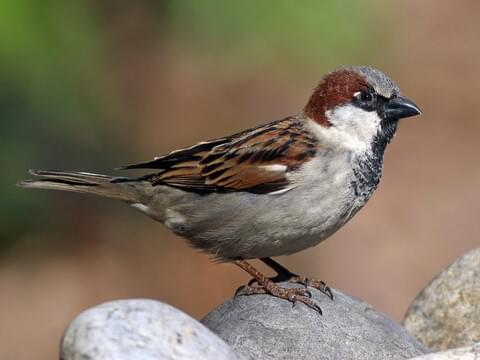
About Pigeon Patrol:
Pigeon Patrol Products & Services is the leading manufacturer and distributor of bird deterrent (control) products in Canada. Pigeon Patrol products have solved pest bird problems in industrial, commercial, and residential settings since 2000, by using safe and humane bird deterrents with only bird and animal friendly solutions. At Pigeon Patrol, we manufacture and offer a variety of bird deterrents, ranging from Ultra-flex Bird Spikes with UV protection, Bird Netting, 4-S Gel and the best Ultrasonic and audible sound devices on the market today.
Contact us at 1- 877– 4– NO-BIRD, (604) 585-9279 or visit our website at www.pigeonpatrol.ca
Bird Gone, Pigeon Gone, Seagull Gone, Pigeon problems, pigeon spikes, 1-877-4NO-BIRD, 4-S Gel, Bird Control, Pigeon Control, bird repellent, Bird Spikes, bird law sonic bird repellent, stainless steel bird spikes, bird spikes Vancouver, Ultra Sonic Bird Control, Bird Netting, Plastic Bird Spikes, Canada bird spike deterrents, Pigeon Pests, B Gone Pigeon, Pigeon Patrol, pest controller, pest control operator, Bird law pest control technician, Pigeon Control Products, humane pigeon spikes, pigeon deterrents, pigeon traps, Pigeon repellents, Sound & Laser Deterrents, wildlife control, raccoon, skunk, squirrel deterrent, De-Fence Spikes, Dragons Den, Canada bird spikes, Canada pigeon, pigeon control, pigeon patrol, pigeon. Kill pigeons, crow, starling, Pigeon Habitat,
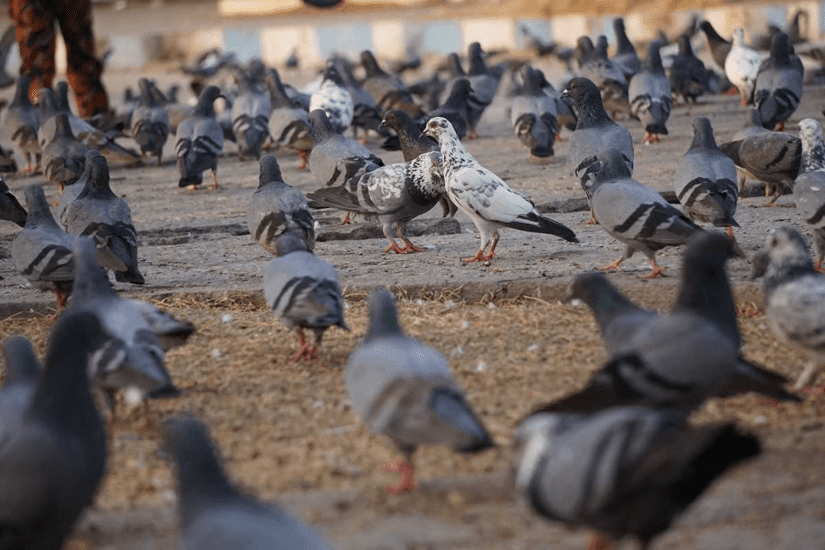
by Pigeon Patrol | Jun 29, 2020 | 4-S Gel Bird repellent, Animal Deterrent Products, Bird Deterrent Products, Bird Netting, Bird Spike, Bird Spikes, Pigeon Control, Pigeon Droppings, Pigeon Patrol's Services, Pigeon Spikes, Pigeons in the News, UltraSonic Bird Control
Pigeon Habitat. Pigeons prefer grains for food and people will commonly feed pigeons unintentionally by spilling food or it in open trash containers. Pigeons roost in areas above ground and will readily nest in steeples, as well as voids on outside areas of buildings and other protected areas.
Pigeons are dependent on humans to provide them with food, roosting and nesting sites. They are commonly found around agricultural areas as well as warehouses, feed mills, and grain elevators. They are also commonly found in cities around parks, buildings, bridges, and any other structures.
Source
About Pigeon Patrol:
Pigeon Patrol Products & Services is the leading manufacturer and distributor of bird deterrent (control) products in Canada. Pigeon Patrol products have solved pest bird problems in industrial, commercial, and residential settings since 2000, by using safe and humane bird deterrents with only bird and animal friendly solutions. At Pigeon Patrol, we manufacture and offer a variety of bird deterrents, ranging from Ultra-flex Bird Spikes with UV protection, Bird Netting, 4-S Gel and the best Ultrasonic and audible sound devices on the market today.
Contact us at 1- 877– 4– NO-BIRD, (604) 585-9279 or visit our website at www.pigeonpatrol.ca
Bird Gone, Pigeon Gone, Seagull Gone, Pigeon problems, pigeon spikes, 1-877-4NO-BIRD, 4-S Gel, Bird Control, Pigeon Control, bird repellent, Bird Spikes, sonic bird repellent, stainless steel bird spikes, bird spikes Vancouver, Ultra Sonic Bird Control, Bird Netting, Plastic Bird Spikes, Canada bird spike deterrents, Pigeon Pests, B Gone Pigeon, Pigeon Patrol, pest controller, pest control operator, pest control technician, Pigeon Control Products, humane pigeon spikes, pigeon deterrents, pigeon traps, Pigeon repellents, Sound & Laser Deterrents, wildlife control, raccoon, skunk, squirrel deterrent, De-Fence Spikes, Dragons Den, Canada bird spikes, Canada pigeon, pigeon control, pidgon patrol, pigeon. Kill pigeons, crow, starling, Pigeon Habitat
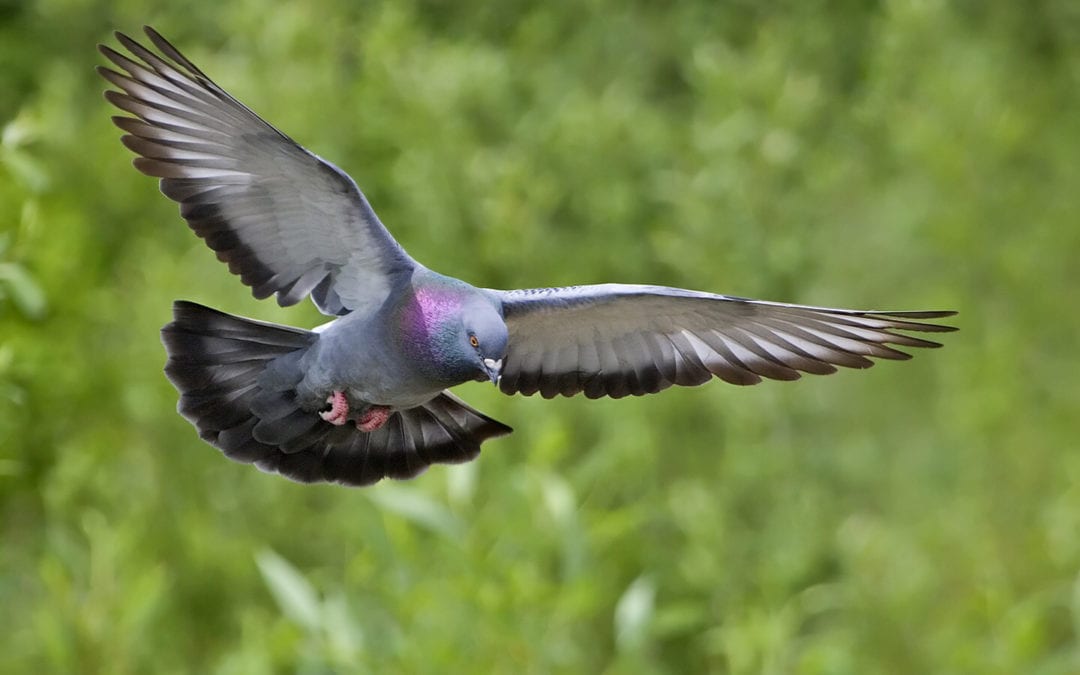
by Pigeon Patrol | Jun 29, 2020 | 4-S Gel Bird repellent, Animal Deterrent Products, Bird Deterrent Products, Bird Netting, Bird Spike, Bird Spikes, Pigeon Control, Pigeon Droppings, Pigeon Patrol's Services, Pigeon Spikes, Pigeons in the News, UltraSonic Bird Control
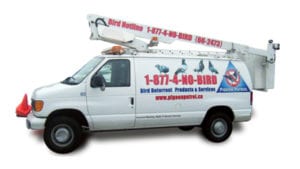 Pigeon Threats? Pigeons are filthy birds, causing disease and damage. Their droppings are known for triggering human slips and falls, as well as accelerating the aging of structures and statues. This makes it imperative to get rid of pigeons in highly trafficked areas. More seriously, pigeons may carry diseases such as cryptococcosis, toxoplasmosis, salmonella, food poisoning, and more. Also, their droppings may harbor the growth of fungus, which causes histoplasmosis. Other pests may live on these birds, including fleas, lice, mites, ticks, and other pests. Pests may also infest nests such as stored product pests.
Pigeon Threats? Pigeons are filthy birds, causing disease and damage. Their droppings are known for triggering human slips and falls, as well as accelerating the aging of structures and statues. This makes it imperative to get rid of pigeons in highly trafficked areas. More seriously, pigeons may carry diseases such as cryptococcosis, toxoplasmosis, salmonella, food poisoning, and more. Also, their droppings may harbor the growth of fungus, which causes histoplasmosis. Other pests may live on these birds, including fleas, lice, mites, ticks, and other pests. Pests may also infest nests such as stored product pests.
If you discover pigeons roosting on your property, contact a professional immediately to discuss a proper course of pigeon control.
Source
About Pigeon Patrol:
Pigeon Patrol Products & Services is the leading manufacturer and distributor of bird deterrent (control) products in Canada. Pigeon Patrol products have solved pest bird problems in industrial, commercial, and residential settings since 2000, by using safe and humane bird deterrents with only bird and animal friendly solutions. At Pigeon Patrol, we manufacture and offer a variety of bird deterrents, ranging from Ultra-flex Bird Spikes with UV protection, Bird Netting, 4-S Gel and the best Ultrasonic and audible sound devices on the market today.
Contact us at 1- 877– 4– NO-BIRD, (604) 585-9279 or visit our website at www.pigeonpatrol.ca
Bird Gone, Pigeon Gone, Seagull Gone, Pigeon problems, pigeon spikes, 1-877-4NO-BIRD, 4-S Gel, Bird Control, Pigeon Control, bird repellent, Bird Spikes, sonic bird repellent, stainless steel bird spikes, bird spikes Vancouver, Ultra Sonic Bird Control, Bird Netting, Plastic Bird Spikes, Canada bird spike deterrents, Pigeon Pests, B Gone Pigeon, Pigeon Patrol, pest controller, pest control operator, pest control technician, Pigeon Control Products, humane pigeon spikes, pigeon deterrents, pigeon traps, Pigeon repellents, Sound & Laser Deterrents, wildlife control, raccoon, skunk, squirrel deterrent, De-Fence Spikes, Dragons Den, Canada bird spikes, Canada pigeon, pigeon control, pidgon patrol, pidgon. Kill pigeons, crow, starling, Pigeon Threats





 Examples: Cardinals, robins, goldfinches.
Examples: Cardinals, robins, goldfinches.

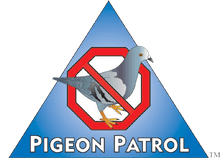











 Pigeon Threats? Pigeons are filthy birds, causing disease and damage. Their droppings are known for triggering human slips and falls, as well as accelerating the aging of structures and statues. This makes it imperative to get rid of pigeons in highly trafficked areas. More seriously, pigeons may carry diseases such as cryptococcosis, toxoplasmosis, salmonella, food poisoning, and more. Also, their droppings may harbor the growth of fungus, which causes histoplasmosis. Other pests may live on these birds, including fleas, lice, mites, ticks, and other pests. Pests may also infest nests such as stored product pests.
Pigeon Threats? Pigeons are filthy birds, causing disease and damage. Their droppings are known for triggering human slips and falls, as well as accelerating the aging of structures and statues. This makes it imperative to get rid of pigeons in highly trafficked areas. More seriously, pigeons may carry diseases such as cryptococcosis, toxoplasmosis, salmonella, food poisoning, and more. Also, their droppings may harbor the growth of fungus, which causes histoplasmosis. Other pests may live on these birds, including fleas, lice, mites, ticks, and other pests. Pests may also infest nests such as stored product pests.